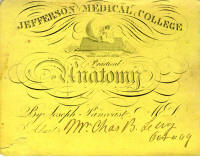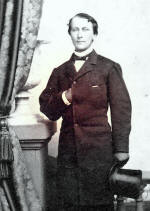

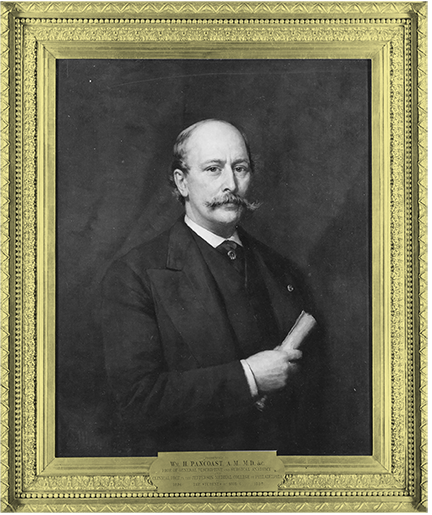
1884
The earliest recorded AI in a medical institution took place at the Jefferson Medical College in Philadelphia by Dr. William Pancoast. It was so secret that even the woman being inseminated wasn’t told that the sperm was from a donor, not her husband. A fascinating story worth telling here:
In 1884, Dr. William Pancoast of the Jefferson Medical College in Philadelphia went rogue and decided to have a little scientific fun with one of his patients, a Quaker woman who had long been unable to conceive. After many examinations, he decided that the fault in fact lay with her husband’s low sperm count. The man, an elderly merchant many years older than his wife, was officially shooting blanks.
Rather than inform her and her husband of the sad state of affairs and move on from a point of full disclosure, Dr. Pancoast summoned the wife to one final “examination.” As the woman lay unconscious and chloroformed on his table as six of Dr. Pancoast’s students looked on, the good doctor injected into her cervix a large syringe full of semen - freshly donated by the student democratically deemed by the group to be the most handsome.
This unnamed woman delivered a healthy baby boy nine months later. Presumably, all were ecstatic. The only problem was that Dr. Pancoast never actually informed her about what he did to her on the table that fateful day. Whether it was to spare her the embarrassment of her husband’s sterility, or whether it was simply to see if he could do it at all, Dr. Pancoast’s experiment remained a secret success for 25 years.
It was only after Dr. Pancoast died — a quarter-century after the successful insemination of his presumably pleased patient — that the truth became known. In 1909, one of the students present that day, the suggestively named and incredibly handsome Dr. Addison Davis Hard, fessed up and published a letter in the journal Medical World containing all the dirty details. It is interesting to note that Dr. Pancoast did actually inform the woman’s husband of what he had done, and that they had decided together to spare her the truth. In addition, before the letter was published, Dr. Hard took it upon himself to tell the by-then all-grown-up baby boy as well. Hopefully, his mother was not a subscriber of Medical World in her old age.
https://ovum-ivf.com/en/news-articles-ivf/71-donor-conception.html
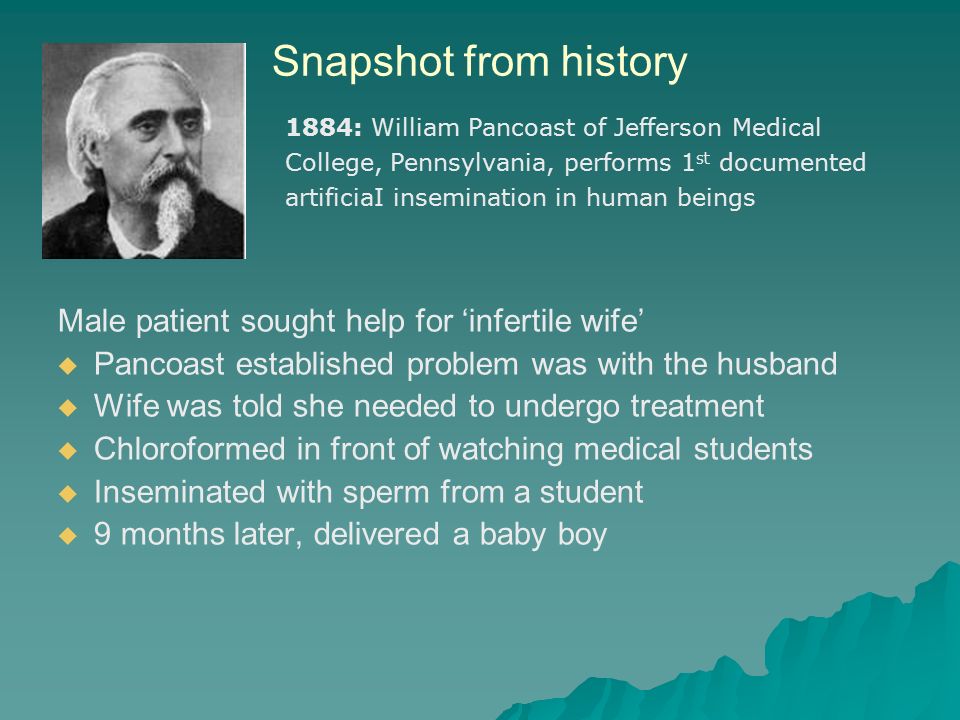
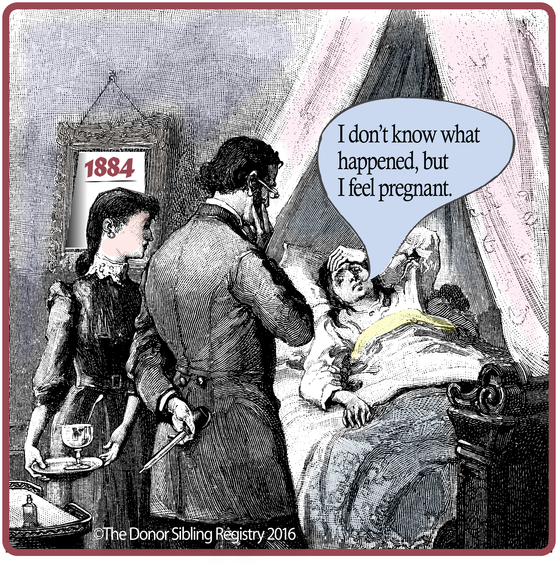
-------------
The horrific true story of the first
‘successful’ artificial insemination.
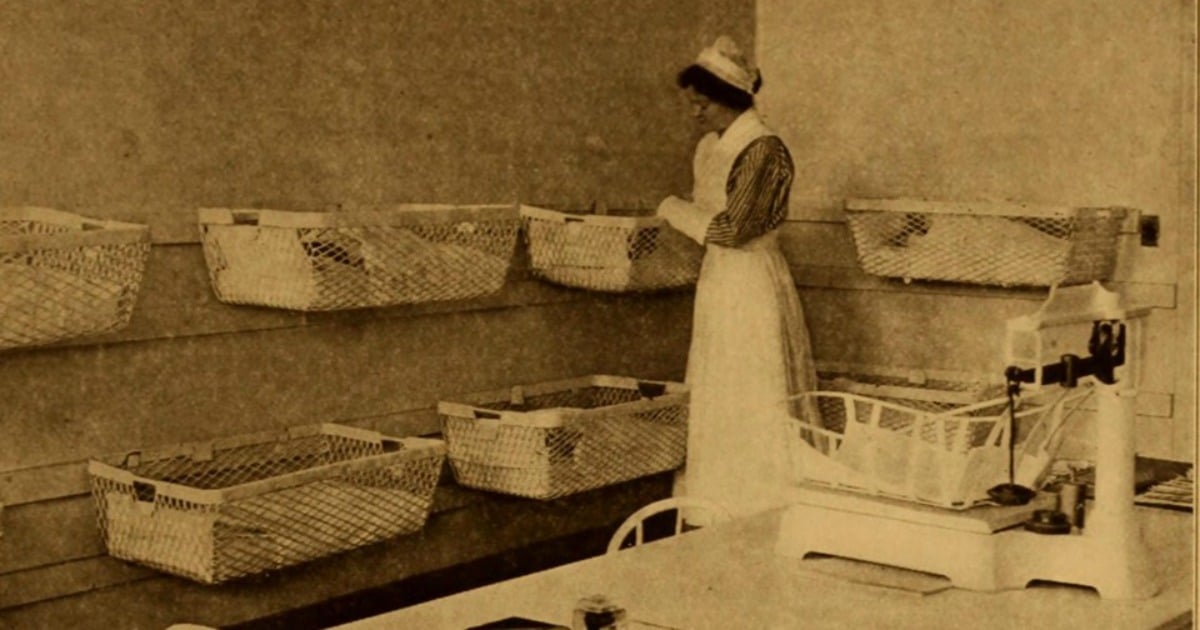
Researchers today often find themselves frustrated by the strict ethical guidelines they’re faced with when they want to try something new. A psychological intervention, perhaps. Or a novel medical procedure.
For those passionate about making a difference and helping people in the most efficient way possible, arduous applications to ethics committees can seem like an inconvenient roadblock. But every now and then, you come across a story that serves as a pertinent reminder of why such considerations are needed. Because more recently than we think, researchers tested interventions and medical procedures in heinous contexts – using deception and vulnerable populations, and causing immense distress.
The first successful artificial insemination is one such case.
In 1884, a 41-year-old man and his 31-year-old wife came to see Philadelphia doctor William Pancoast about their inability to conceive a child. It was assumed that the problem was due to “some impediment” with the woman, “which might be removed,” but after several tests, it became clear that the man had a very low sperm count. It was concluded that the issue was “probably due to results of the gonorrhea in his youth,” and the doctors began a course of treatment.
But when the treatment failed to work, a medical student joked, “the only solution… is to call in the hired man.” The comment gave the doctor his idea.
The concept of artificial insemination wasn’t new – but it had never before resulted in a live birth.
Pancoast chose not to tell the couple about the man’s seemingly incurable problem, and instead, the team of six adopted the following plan of action.
According to a letter in The Medical World, “the woman was chloroformed, and with a hard rubber syringe some fresh semen from the best-looking member of the class was deposited in the uterus, and the cervix slightly plugged with gauze.
“Neither the man nor the woman knew the nature of what had been done at the time, but subsequently the Professor repented of his action, and explained the whole matter to the husband.”

Rather than being angry with the medical professionals for their deception and completely unethical behaviour towards his wife, the man conspired with the Professor to keep the true nature of the conception a secret.
The woman gave birth to a son, who reportedly, "had characteristic features, not of the senior student, but of the willing but impossible father."
The letter in The Medical World journal, which recounts the details of the procedure, was written by Addison Davis Hard, one of the six medical students present, 25 years after the procedure occurred. During that time, Hard had met with and informed the then-25-year-old son about the nature of his birth, but it is unknown whether the mother was ever told what had happened to her.
--------

Maternity ward in Washington DC, about 1919
---------------
SATURDAY, SEPTEMBER 5, 2009
A Brief History of Donor Insemination
 1677 - Antonie van Leeuwenhoek, a Dutch scientist from Delft, considered to be the father of microbiology, discovers sperm, along with his pupil Johan Hamm, with the use of a magnifying lens. They refer to the sperm as animalcules.
1677 - Antonie van Leeuwenhoek, a Dutch scientist from Delft, considered to be the father of microbiology, discovers sperm, along with his pupil Johan Hamm, with the use of a magnifying lens. They refer to the sperm as animalcules.
1779 – Italian biologist and physiologist Lazzaro Spallanzani is the first to perform artificial insemination, using a dog. He kept the two animals in separate rooms to avoid natural mating and when the female dog showed signs of being in heat he collected semen from the male dog next door injecting the semen into the female dog’s womb. She became pregnant, and sixty-two days later, three healthy puppies were born. Spallanzani also observed the effects of cooling and freezing human sperm, now a common storage technique.

1790 - John Hunter, British physiologist and surgeon, is the first to record a pregnancy and delivery of a child conceived by artificial insemination with a husband’s semen.
1838 - A Frenchman named Girault used a hollow tube to blow sperm into a vagina.
1865 - De Haut published a pamphlet on Artificial Insemination in France but discontinued his experimentation due to public disapproval.
 1866 - American gynecologist J. Marion Sims reported fifty-five intrauterine injections performed on six women enjoying only a four per cent success rate. Sims, a controversial doctor, said to have performed unethical and sometimes brutal surgery on slave women, was later elected as President of the American Medical Association in 1875.
1866 - American gynecologist J. Marion Sims reported fifty-five intrauterine injections performed on six women enjoying only a four per cent success rate. Sims, a controversial doctor, said to have performed unethical and sometimes brutal surgery on slave women, was later elected as President of the American Medical Association in 1875.
1866 - First reported successful artificial insemination (with husband’s semen) in the United States.

1883 – Francis Galton, first cousin of Charles Darwin, coins term eugenics, meaning good breeding.

1884 – World’s first case of human donor insemination, performed by Dr. William Pancoast Jefferson Medical College, Philadelphia. The procedure is kept secret until 1909.
1886 – Paolo Mantegazza, a well known Italian neurologist, physiologist and anthropologist makes world’s first proposal for a sperm bank.
1909 – Addison Davis Hard, one of Dr. William Pancoast’s students, publishes a letter in American Journal Medical World, disclosing the details of the 1884 DI procedure, setting off a debate among lawyers, philosophers, theologians and medical practitioners.
1914 - Giuseppe Amantea, an Italian physician and physiologist, devised first artificial vagina thought to have greatly advanced artificial insemination technology.
1938 – Twenty-four articles on human artificial insemination are written and published in the United States.
1938 - First cattle breeding organization in the United States to use artificial insemination begins operations in New Jersey.
1941 - It is estimated that 3700 human donor inseminations occur in the U.S.
1945 - A string of medical committees are established in the U.K. concerning the ethical and moral dimensions of human donor insemination. The first report in the British Medical Journal condemned Donor Insemination calling it a “criminal offense.”

1949 – Pope Pius the XII rejects donor insemination on moral grounds.
1960 - The Feversham Committee deems the practice of donor inseminationundesirable.
1970 - The Peel Report comes out in favor of Donor Insemination.
1985 - The Warnock Report states: “The protection of the public, which we see as the primary objective of regulation, demands the existence of an authority independent of Government, heath authorities, or research institutions. The authority should be specifically charged with the responsibility to regulate and monitor practice in relation to those sensitive areas which raise fundamental ethical questions. We therefore recommend the establishment of a new statutory licensing authority to regulate both research and those infertility services which we have recommended should be subject to control.”
1980’s - In the United States it is estimated that up to 100,000 children are the product of D.I. each year, 20,000 a year in California alone.
1987 - It is estimated one million DI children are living in United States.

1988 – A study done by the Congressional Office of Technology - commissioned by then Senator Al Gore - reveals a surprising lack of testing among semen donors for sexually transmitted diseases. According to the study, as reported by The New York Times, “…more than half of the 1,558 physicians surveyed said they did not check prospective donors for the AIDS virus; nearly three-quarters did not test for syphilis, gonorrhea or hepatitis, and about half did not perform any tests for genetic defects.” Then what are they screening for? “What many doctors do instead of testing is require prospective donors to answer questions about their life style, such as ‘Are you homosexual?’ and ‘Are you sexually promiscuous?’ These doctors say that since a majority of donors are university or medical students, who are presumably knowledgeable about health matters, their answers can be trusted.” Do you get the feeling that there’s a lot of winking and nudging going on in the DI world? It is the most comprehensive U.S. survey of procreative industry to date.
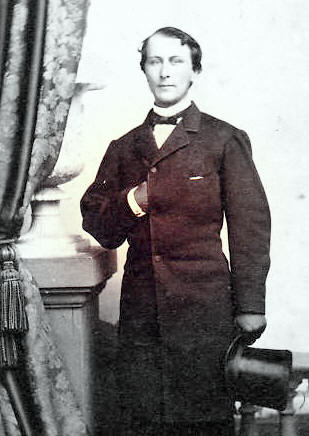
William H. Pancoast, M.D., 1861
William Henry, was a surgeon, born in Philadelphia, Pennsylvania, 16 October, 1835, graduated at the Jefferson medical college in 1856, studied for three years in London, Paris, and Vienna, and on his return established himself in practice in Philadelphia, and acquired a high reputation as a bold, rapid, and skilful operative surgeon, conservative in treatment and seldom mistaken in diagnosis. He served in the Union Army as an Assistant Surgeon.
http://www.medicalantiques.com/civilwar/Armand_images/Civil_War_surgeon_images_8.htm ]]]]]】】】】
| Birth: | 1834 Pennsylvania, USA |
| Death: | Jan. 5, 1897 Philadelphia Philadelphia County Pennsylvania, USA |
|
|
|

Joseph Pancoast, M.D.
Click on image to enlarge
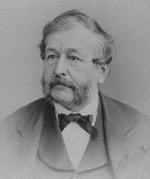 PANCOAST, Joseph, surgeon, born in Burlington county, New Jersey, in 1805; died in Philadelphia, Pennsylvania, 7 March, 1882. He was graduated at the medical department of the University of Pennsylvania in 1828, practised as a surgeon in Philadelphia, and in 1831 began to teach classes in practical anatomy and surgery, he was chosen one of the physicians of the Blockley hospital in 1834, soon afterward was made head physician of the children's hospital connected with it, and from 1838 till 1845 was one of the visiting surgeons. In 1838 he was elected professor of surgery in Jefferson medical college, and in 1847 was transferred to the chair of anatomy, which he filled till 1874, when he was succeeded by his son, William H. Pancoast.
PANCOAST, Joseph, surgeon, born in Burlington county, New Jersey, in 1805; died in Philadelphia, Pennsylvania, 7 March, 1882. He was graduated at the medical department of the University of Pennsylvania in 1828, practised as a surgeon in Philadelphia, and in 1831 began to teach classes in practical anatomy and surgery, he was chosen one of the physicians of the Blockley hospital in 1834, soon afterward was made head physician of the children's hospital connected with it, and from 1838 till 1845 was one of the visiting surgeons. In 1838 he was elected professor of surgery in Jefferson medical college, and in 1847 was transferred to the chair of anatomy, which he filled till 1874, when he was succeeded by his son, William H. Pancoast.
From 1854 till 1864 he was one of the surgeons to the Pennsylvania hospital. Dr. Pancoast was the originator' of an operation for soft cataract with a fine needle, bent near the point. He devised many new operations in plastic surgery, among them the formation of a nose by means of the plough and groove or plastic suture, introduced in 1841; a substitute for the eyebrow, formed from a flap of the scalp; the introduction of a catheter for empyema into the pleura by raising a flap of the integuments over the ribs; turning down flaps from the skin of the abdomen for the relief of exstrophy of the bladder, which was first performed by him in 1868 ; and the raising of a flap over the coronoid process, and the removal of that process and part of the lower jaw in order to divide the trunks of the nerves that cause pain in facial neuralgia. He discovered that in some cases of strabismus the internal oblique muscle must be cut. He has restored the voice by dividing the muscles of the soft palate that have become contracted from ulceration. He also devised an abdominal tourniquet, which he first used in 1860, for compressing the aorta, and thus preventing" death from loss of blood in amputation at the hip-joint or upper thigh.
He was a member of the American philosophical society, and of various medical and scientific associations. Besides numerous contributions to the "American Journal of the Medical Sciences," the "American Medical Intelligencer," and the "Medical Examiner," essays and introductory lectures to his , :lassos, of which the most notable was "Professional Glimpses Abroad," and various pathological and surgical monographs and reports of new operations, he published a translation from the Latin of J. Frederick Lobstein's "Treatise on the Structure, Functions, and Diseases of the Human Sympathetic Nerve" (Philadelphia, 1831); "Treatise on Operative Surgery, including Descriptions of all the New Operations," his greatest work (1844; revised ed., 1852); and "A System of Anatomy for the Use of Students," based on the work of Casper Wistar (1844). He edited "Manet on the Great Sympathetic Nerve "; the "Cerebro-Spinal Axis of Man," by the same author (1841) ; and "Quain's Anatomical Plates" (1852).
Edited Appletons Encyclopedia, Copyright © 2001 VirtualologyTM
 www.medicalantiques.com/civilwar/Medical_Authors_Faculty/Pancoast_Joseph.htm
www.medicalantiques.com/civilwar/Medical_Authors_Faculty/Pancoast_Joseph.htm
Joseph Pancoast (November 23, 1805 – March 6, 1882)
